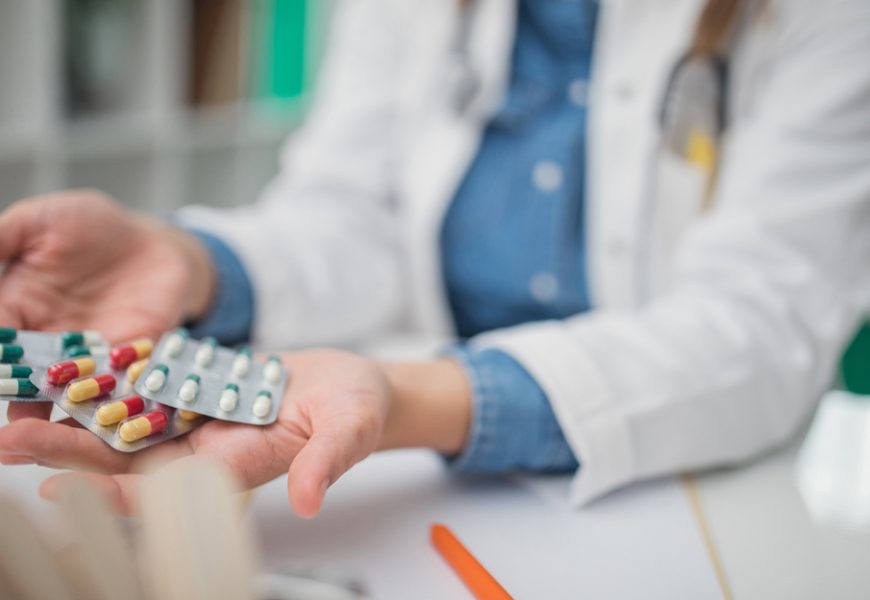Amoxicillin is one of the most frequently prescribed antibiotics worldwide. Known for its efficacy in treating a range of bacterial infections, it’s commonly used for conditions such as ear infections, respiratory infections, urinary tract infections (UTIs), and some skin infections. For those prescribed amoxicillin for the first time, it’s natural to have questions about what to expect during treatment, from potential side effects to effectiveness and recovery time.
1. What is Amoxicillin?
Amoxicillin tablet is a penicillin-type antibiotic, which means it works by interfering with the bacterial cell walls. This interference causes bacteria to break down, effectively stopping their ability to survive and multiply. It is effective against a wide range of bacteria, including those responsible for ear infections, bronchitis, pneumonia, and skin infections.
2. How to Take Amoxicillin: Dosage and Timing
Typically, amoxicillin is taken either two or three times a day, depending on the infection being treated and the doctor’s instructions. It’s essential to follow the prescribed dosage schedule closely, as missing doses can reduce its effectiveness. Here’s what to remember:
- Timing Matters: Take amoxicillin at evenly spaced intervals to maintain a consistent level in the bloodstream.
- With or Without Food: Amoxicillin can generally be taken with or without food. However, if it causes stomach discomfort, consider taking it with a meal.
- Full Course: Even if you feel better before finishing the prescription, it’s crucial to complete the full course to prevent antibiotic resistance and ensure the infection is fully eradicated.
- Other Dosages of amoxicillin: Amox 500Mg
3. How Soon Does Amoxicillin Start Working?
Many people begin to feel better within 48 to 72 hours after starting amoxicillin. However, symptom relief doesn’t mean the infection is completely gone. Amoxicillin requires time to work fully, which is why completing the entire course is essential for thorough treatment.
4. Common Side Effects to Expect
Most people tolerate amoxicillin well, but some side effects are common, particularly in the first few days of treatment. These side effects can include:
- Digestive Issues: Nausea, vomiting, and diarrhea are among the most common side effects. Staying hydrated and eating bland foods can help minimize discomfort.
- Headache: Mild headaches can occasionally occur, but these often go away after the body adjusts to the medication.
- Yeast Infections: Women, in particular, may notice a higher incidence of yeast infections, as antibiotics can disturb the balance of bacteria in the body.
5. Less Common but Serious Side Effects
Although rare, some individuals may experience more severe reactions to amoxicillin, such as:
- Allergic Reactions: Signs of an allergic reaction include hives, itching, or swelling. In severe cases, it may cause difficulty breathing or anaphylaxis, a life-threatening condition. If you experience any of these symptoms, seek medical help immediately.
- Severe Gastrointestinal Issues: While diarrhea is common, severe and persistent diarrhea might be a sign of a more serious condition called Clostridioides difficile (C. diff) infection, which requires medical attention.
- Liver Issues: Rarely, amoxicillin can cause liver problems, leading to symptoms like yellowing of the skin or eyes. If you notice any such symptoms, consult your healthcare provider promptly.
6. Tips for Managing Side Effects
There are ways to minimize or manage side effects while taking amoxicillin:
- Stay Hydrated: Drinking plenty of water can help manage side effects like headaches and digestive upset.
- Probiotics: Taking probiotics during and after antibiotic treatment can help maintain the balance of good bacteria in the body and prevent gastrointestinal distress and yeast infections.
- Avoid Alcohol: Alcohol can increase side effects and reduce the effectiveness of antibiotics, so it’s best to avoid it until treatment is complete.
7. When to Expect Symptom Relief
Depending on the type of infection, symptom relief can vary:
- Respiratory Infections: With conditions like bronchitis or pneumonia, people may start feeling better within 2 to 3 days, though it can take up to a week for full recovery.
- Ear Infections: Relief often begins within 24 to 48 hours, but children and those with severe cases might need the full course to feel completely better.
- UTIs: Symptom relief from a UTI can often begin within the first day of treatment, but it’s crucial to complete the course to ensure the infection doesn’t return.
8. Drug Interactions and Precautions
Amoxicillin is generally safe when taken as directed, but it can interact with other medications, potentially altering its effectiveness. Inform your doctor of any other prescriptions, over-the-counter medications, or supplements you’re taking, especially:
- Oral Contraceptives: While evidence is mixed, some studies suggest that amoxicillin could slightly reduce the effectiveness of birth control pills.
- Anticoagulants: Amoxicillin may increase the effects of blood thinners like warfarin, so regular monitoring may be needed.
- Methotrexate: This medication, commonly used for cancer and autoimmune conditions, can interact adversely with amoxicillin. Your doctor may need to adjust your dose or monitor your condition closely.
9. Completing Your Amoxicillin Course
Stopping antibiotics early is a common mistake. Even if symptoms improve after a few days, the bacteria may still be present and could rebound if the full course is not completed. Finishing the entire prescription reduces the risk of developing antibiotic resistance, which is when bacteria evolve to withstand antibiotic treatments.
10. Signs You Need Further Medical Attention
In some cases, symptoms might persist or worsen even with amoxicillin treatment. Here are signs that you may need further evaluation:
- No Improvement After 3 Days: If your symptoms don’t begin to improve, consult your healthcare provider.
- Severe Side Effects: As noted earlier, severe allergic reactions, persistent diarrhea, or signs of liver issues warrant immediate medical attention.
- Recurrent Infections: If your symptoms improve but quickly return after finishing treatment, you may have a recurring infection, or the initial infection may not have fully resolved.
11. What to Do After Completing Treatment
Once you finish the course, you may wonder if there’s anything further you need to do. Generally, you won’t need additional follow-up unless symptoms recur. Here are a few post-treatment tips:
- Probiotics and Diet: Continue to support your gut health with probiotics and fiber-rich foods to restore any bacteria balance disrupted by the antibiotic.
- Monitor for Recurrence: Watch for any return of symptoms, which could suggest the need for another medical checkup.
Conclusion
Amoxicillin remains a highly effective treatment for many bacterial infections. By understanding what to expect during treatment, you can ensure that the experience is as smooth as possible, from managing side effects to achieving symptom relief. Remember to consult your healthcare provider if you have any concerns during treatment or experience symptoms that persist beyond the expected recovery period.















